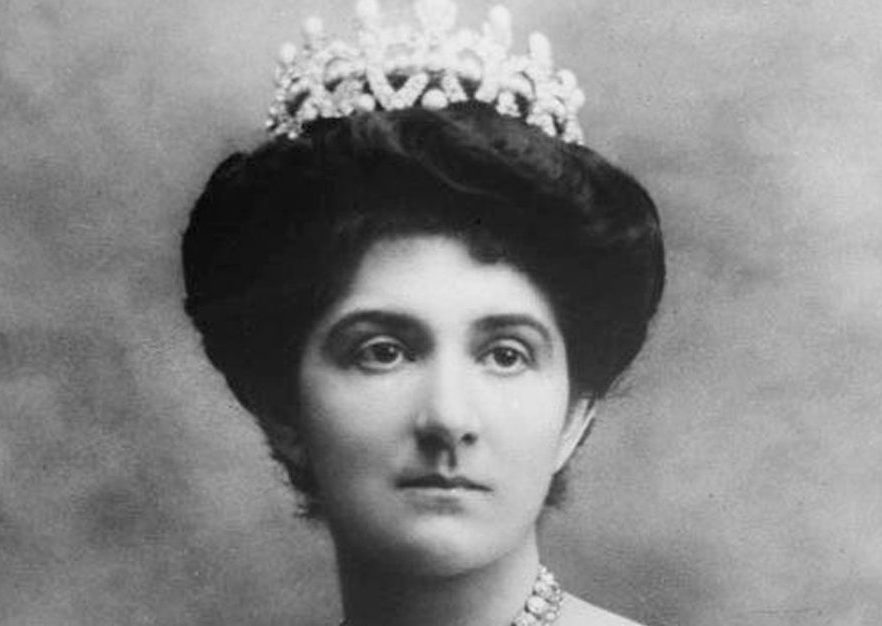Princess Elena of Montenegro, or more commonly known as Queen Elena of Italy, was born in Cetinje in 1871 as the fifth daughter of King Nikola I Petrović Njegoš and Queen Milena Vukotić. At the age of 10, she went to the Smolny Institute for young ladies in St. Petersburg, Russia. She was very talented at painting and architecture and even designed the monument for Prince-Bishop Danilo I. She also became fluent in several languages and developed a love of poetry and nature.
Unlike her sisters, she didn’t like staying at the Smolny Institute. She wasn’t really interested in studying and attending classes and would skip them as often as she could. After the death of her sister Maria, who died in Elena’s hands, she was completely crushed. Elena wanted to leave the institute, to forget all the dark things that reminded her of that place. She wanted to learn medicine and believed more in the body rather than the soul.
Of all the sisters, she was the one with the most secret admirers at balls. The famous duel in Russia between Prince Arsen of Serbia and Baron Carl Gustav von Mannerheim of Finland happened because of her. Mannerheim was wounded defending Elena’s honor. After this defeating duel, for both Elena and Carl, she was forced to go back to Cetinje until the dust settled.
After some time, in a sort of a romantic and perverse way, Elena fell in love with the Italian Crown Prince. When she found out that he was searching for a wife, Elena decided that she would be just the one.
Victor’s mother, Queen Margherita of Savoy, wanted her son to marry a healthy, good-looking girl since Victor himself had health issues and was only 153 cm high.

Victor Emmanuel III | Photo source: History in an hour
Count Sanminiatelli, an Italian diplomat in Cetinje, sent a detailed description of both Elena and her sister Anne, with their photos and a full medical report, to the Italian Prime Minister Crispi. In the report, Elena was described as serious and thoughtful, whereas Anne was described as lively but childish. Crispi liked Elena and wrote of her in his report to Queen Margherita, though hiding Elena’s height, fearing that it might make the Queen choose someone else.
In February 1895, the World Exhibition of Contemporary Painting opened in Venice and the Montenegrin royal family was invited. At this event, Elena met the Italian Crown Prince, Victor Emmanuel III.
Elena was smitten by Victor and wanted to make him feel the same way. It was at the later coronation of Tsar Nicholas II that she succeeded in her plan and the two were immediately love struck. Queen Margherita was happy with her son’s choice, given that Elena was modest, beautiful and healthy. The Queen was more concerned about the diversity of the royal bloodline, since too many cousins were getting married in the family, and so warmly encouraged this match.

Photo source: Pinterest
Soon, a marriage was arranged between Princess Elena and Prince Vittorio Emanuele III, the only son of King Umberto I of Italy and Queen Margherita of Savoy. The couple married on October 24, 1896 in Rome. A civil ceremony was held at the Quirinal Palace. It was followed by a religious ceremony at the Basilica of St. Mary of the Angels and Martyrs. Elena, raised in the Eastern Orthodox faith, had to convert to Catholicism before the marriage. The conversion had to be done on a boat in the sea between the two countries. Her mother was so offended by her daughter becoming Catholic that she refused to attend the wedding.
The King and Queen had a very happy marriage and had five children, four daughters and a son. The couple were devoted to each other and the King would bring his wife roses from the garden he collected himself every morning.

Photo source: Pinterest
After the assassination of King Umberto I, her husband became King Victor Emmanuel III and she became Queen consort of Italy.
Elena quickly became a great support to her husband as well as a favorite of the Italian people. As the Queen, she focused on helping those in need in her new country. Elena was the first Inspector of the Voluntary Nurses for the Italian Red Cross from 1911 until 1921 and worked as a nurse during World War I. With her mother-in-law, she established hospitals at Quirinal Palace and Villa Margherita. Queen Elena is often credited with ‘inventing’ the signed photograph, which she had sold to raise funds for the war effort and medical care for the Italian forces.
Queen Elena stayed away from politics for the most part. Her only intervention of any significance was when she urged the King to press Mussolini for the creation of an independent Kingdom of Montenegro in 1941, as her homeland had previously been absorbed by Yugoslavia after World War I.

Photo source: Pinterest
In the midst of World War II, her husband, having initially supported the Fascist movement, lost the trust of the Italian people. Although he had transferred much of his power to their son in 1944, it was necessary for him to step down from the throne in an attempt to save the monarchy. King Vittorio Emanuele III abdicated on May 9, 1946, with the hopes that a new King, their son Umberto II, would bring the support for continuing the monarchy in an upcoming referendum.
After the abdication, Vittorio Emanuele and Elena went into exile, settling in Alexandria, Egypt, at the invitation of King Farouk. Vittorio Emanuele died in Alexandria in 1947, and in 1950, Elena moved to Montpellier, France, to undergo treatment for cancer. Living at the Metropole Hotel, Queen Elena died of a pulmonary embolism on November 28, 1952. She is buried in the Montpellier Municipal Cemetery.
Queen Elena went down in history as the last Italian queen. Pope Pius XII, in a condolence telegram sent to her son Umberto II for the queen’s death, defined her as a “Lady of charitable work”.
Sources: revolvy.com, Isidora Bjelica “Crnogorske princeze”, montenegrina.net, unofficialroyalty.com, italianmonarchist.blogspot.rs, infogalactic.com.


